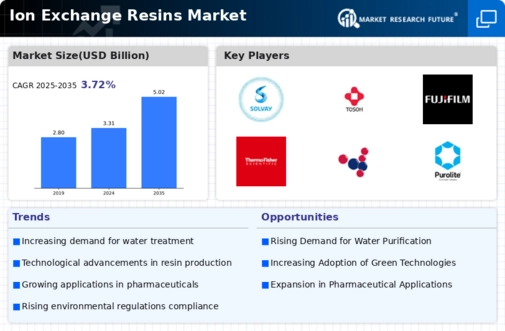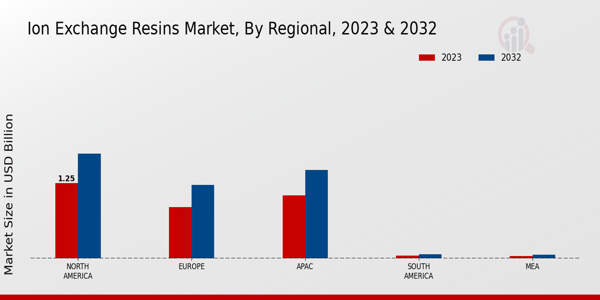Market Share
Ion Exchange Resins Market Share Analysis
Market share positioning strategies play a crucial role in the Ion Exchange Resins Market, where companies strive to carve out their niche and establish a competitive advantage. One common approach is differentiation, where companies aim to distinguish their products from competitors through unique features or attributes. For instance, a company might focus on developing ion exchange resins with superior durability, efficiency, or environmental sustainability. By offering something distinct, they can attract customers who value these qualities and capture a larger share of the market.
Another strategy involves targeting specific market segments. Rather than trying to appeal to everyone, companies may concentrate on serving particular industries or applications where their products excel. For example, a company might specialize in providing ion exchange resins for water treatment plants, pharmaceutical manufacturing, or electronics production. By focusing their efforts and resources on these segments, they can tailor their products and marketing messages to better meet the needs of customers, ultimately gaining a stronger foothold in those markets.
The increasing demand across the food and beverage industry, chemical industry, water treatment industry, industrial water treatment plants, and significant others are considered as the major drivers of ion exchange market growth.
Furthermore, pricing strategies can influence market share positioning. Some companies may opt for a cost leadership approach, aiming to offer ion exchange resins at lower prices than competitors while maintaining acceptable quality levels. This can be effective in attracting price-sensitive customers and capturing market share, especially in industries where price is a significant factor in purchasing decisions. Conversely, other companies may adopt a premium pricing strategy, positioning their products as high-quality or premium offerings and targeting customers who are willing to pay a premium for superior performance or service.
In addition to product differentiation and targeting specific market segments, effective distribution channels are essential for gaining market share in the Ion Exchange Resins Market. Companies need to ensure that their products are readily available to customers through efficient distribution networks. This may involve partnering with distributors or wholesalers who have extensive reach and established relationships with end-users in various industries. By leveraging these channels effectively, companies can increase their market penetration and capture a larger share of the market.
Moreover, innovation plays a key role in market share positioning within the Ion Exchange Resins Market. Companies that continually invest in research and development to improve their products or develop new solutions can stay ahead of competitors and maintain or expand their market share. Whether it's developing more efficient resins, enhancing manufacturing processes, or exploring new applications, innovation can be a powerful driver of growth and differentiation in the market.
Furthermore, strategic partnerships and collaborations can also be instrumental in market share positioning. By teaming up with complementary companies or research institutions, companies can access new markets, technologies, or expertise that can enhance their competitive position. For example, a company specializing in ion exchange resins might collaborate with a water treatment equipment manufacturer to offer integrated solutions to customers, providing added value and differentiation in the market.
Lastly, effective marketing and branding strategies are essential for establishing and reinforcing market share positioning. Companies need to communicate their unique value proposition effectively to target customers and differentiate themselves from competitors. This may involve creating compelling branding and messaging that resonates with customers' needs and aspirations, as well as leveraging various marketing channels such as advertising, social media, and trade shows to reach and engage their target audience.















Leave a Comment